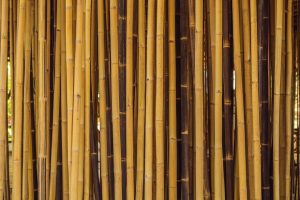
Innovative construction materials are welcomed by the industry due to high costs and shortages of conventional building materials. Many of these new products draw upon resources that are available in quantity and can easily be converted into useful items. The following innovative materials are currently used by construction managers to revolutionize modern construction.
Aerographite Is A Versatile Material
Aerographite is becoming a popular building material consisting of small hollow carbon tubes. It is stable, strong, and bendable, absorbs light rays, and can withstand a lot of vibration without damage. It conducts electricity well and becomes stronger under stress. Its uses include making purification systems, aviation materials, and satellites.
Innovative Construction Materials: Allusion Panels
An allusion panel is cladding made from stabilized aluminum foam that creates solid and light panels resembling metallic sponges. It features include soundproofing, durability, fire resistance, and ease of installation. Its typical applications include ceilings, facades, flooring, light fixtures, signage, and wall panels.
Artificial Spider Silk
This product mimics spider silk’s strength, stretchability, and energy capacity. It is made from hydrogel containing 98% water and the balance is silica and cellulose fibers. Once the water evaporates, the remaining materials form strong fibers, and it is easy to produce on a large scale. Artificial spider silk is 340 times more durable than cement and is often used to make acoustic building tiles.
| “Innovative construction materials are welcomed by the industry due to high costs and shortages of conventional building materials.” |
 Innovative Construction Materials: Bamboo Reinforced Concrete
Innovative Construction Materials: Bamboo Reinforced Concrete
Concrete reinforced with steel is one of the most common building materials. Bamboo is also used to reinforce concrete because it has strong tensile properties and is sustainable. It is superior to some timber and a few types of structural steel. Bamboo fibers are extracted and combined with natural resins, which make a strong and versatile material with a robust structural matrix.
Carbon Fiber Balsa Is A New Development
Balsa wood is used in construction because it is strong and lightweight. This wood can be infused with carbon fiber resin to create an engineered composite material that is low in weight and easy to attain specific stiffness and other requirements. Since balsa wood is expensive, infusing it with other materials reduces its cost per item.
Cigarette Butt Bricks Are Innovative
An innovative product developed in Australia is cigarette butt bricks. Companies decided to use these butts in the production of bricks since about 20 billion cigarettes are consumed each year and they can be obtained for little cost. This product offers several benefits that include:
- Drastically reduces the wastage produced by the butts
- Reduces energy used in brick production by up to 58%
- The bricks are lighter and have good insulation properties
- Reduces heating and cooling costs in housing
- Cigarette butt concentration can be adjusted in brick production to match building requirements and codes
Hollow Clay Bricks Used In Modern Construction
Hollow clay bricks are starting to replace conventional bricks because they are perforated and lined with insulation materials. They are eco-friendly, lightweight, and have low water absorption. Other benefits include improved aesthetic appearance, faster project completion, good compressive strength, and the ability to be used in partition walls. Their cost is in line with traditional-sized bricks, which makes them an ideal building material.
Innovations In Hydro Ceramics
Hydro ceramics are new to modern construction for building walls and are well-accepted by builders because they allow walls to react to outside temperatures. Other benefits include:
- Constructed with clay panels and water capsules
- They absorb water to cool buildings
- Reduces temperature while it increases humidity
- Evaporating water releases cold air into buildings
- Increases humidity in hot, dry climates
- Hydro ceramics are a low-cost wall alternative
Light-Generating Cement Has Many Applications
Light-generating cement can absorb and radiate light to improve functionality and versatility for energy efficiency. It is used in parking lots, road safety signs, and swimming pools. It is produced by altering the microstructure of cement so it can absorb solar energy and emit light in darkness. The cement generates blue and green colors that can be adjusted for light intensity requirements.
 Pollution-Absorbing Bricks
Pollution-Absorbing Bricks
Pollution reduction and product sustainability are driving forces in modern construction. Increasing populations produce more pollution and waste in general. These issues have prompted companies to produce pollution-absorbing bricks that filter outdoor air and let it into buildings’ interiors.
- These bricks and blocks are faceted to direct airflow
- They are inexpensive compared to mechanical filtration
- The bricks and blocks use less energy
- Skilled labor is not required to construct walls
Transparent Wood Is Revolutionary
Transparent wood is an amazing alternative to glass and plastic products. It possesses the same strength as lumber and is substantially lighter. This product is made by compressing and treating thin strips of wood with polymers that make it transparent. It provides low density, low thermal conductivity, and high optical transmittance. This reduces the need for artificial light and minimizes power consumption. Contact ITI Technical College today for more information.
Innovative materials in modern construction are revolutionizing the industry. Their consumer benefits are welcomed worldwide as we strive to improve our environment. Construction management is a growing career for those who are qualified. Discover what we have to offer in our Construction Management (AOS) Associate in Occupational Studies Degree.
.
For more information about graduation rates, the median debt of students who completed the program, and other important information, please visit our website: https://iticollege.edu/disclosures/






